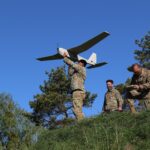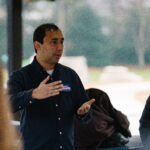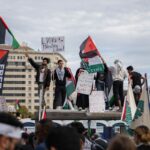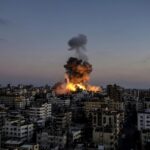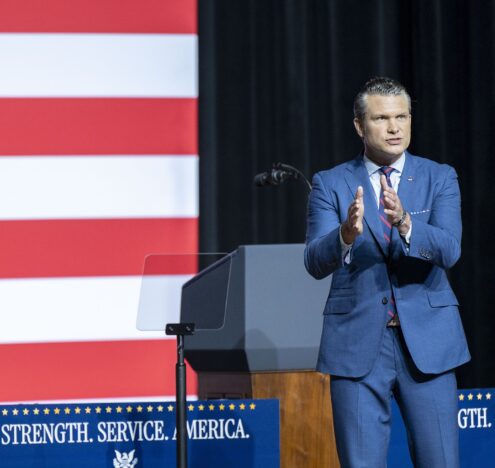A recent tragedy offers a glimpse into the grim reality on the ground of the “total war” in Somalia. An explosion killed and injured civilians, including children, during an operation in El-Lahelay on Sept. 6, 2023. But nearly all the tragedy’s details remain unconfirmed mysteries. The Somali government said an al-Shabaab improvised explosive device or IED killed a mother and her two children, but witnesses and al-Shabaab blame a US airstrike near the family’s home. US Africa Command (AFRICOM) said, “civilians were injured and killed in the vicinity of the operation.” AFRICOM also said US forces weren’t present or conducting strikes for said operation.
One thing is clear: up to seven civilians, including up to five children and a woman, were killed in the crossfire. Alarmingly, this is only one of many recent war-induced tragedies in Somalia. To Somali President Hassan Sheikh Mohamud, peace in Somalia is only possible after defeating al-Shabaab. For this reason, despite mounting dire costs, Mohamud fervently supports the “total war.”
To clarify, there’s nothing revolutionary about the current total war. Rather, it’s a virtually identical iteration of an obstinate counterinsurgency effort. The main differences are the number of retaken territories and the extent of clan mobilization. The Somali government leads the fight but probably couldn’t sustain it without outside help. Some say that total war is a Somali-led solution, and in some ways, it is. But it’s mainly foreign actors who have driven the fight via their military support.
Despite the president’s and foreign militaries’ support, total war has ample weaknesses. These weaknesses often lead to human suffering and casualties. As total war inevitably continues, so will its consequences. To save the lives and livelihoods of countless more people, the Somali government must revise its total war strategy. A flawed strategy is a recipe for disaster, and the past year serves as a case in point.
How “Total War” Started
From 2017 to 2022, the Somali government did little to challenge al-Shabaab, forcing civilians to endure its brutality. In 2018, clan militias in Middle Shabelle formed the Macawiisley (also Ma’awisley) to rebel against al-Shabaab’s rule. In August 2022, discontent with al-Shabaab fueled another clan rebellion, which the government capitalized on by declaring total war and launching the Macawiisley offensive.
Over the past year, the Somali National Army (SNA), with critical help from clan militias, retook swaths of territory from al-Shabaab. Clan militias are a key reason for the offensive’s surprising success because they provide a much-needed operational boost to the SNA. This boosted fighting force is further aided by troops from the African Union Transition Mission in Somalia (ATMIS).
The “first phase” of the offensive attempted to eradicate militants in central Somalia. Operations targeted al-Shabaab stronghold towns and hideouts in Hirshabelle and Galmudug states. In many operations, the SNA relied heavily on clans like the Hawadle sub-clans and Abgal, the United States for air support, and ATMIS for peacekeepers. The combined forces dislodged al-Shabaab from strategic towns, killed thousands of militants, and mobilized thousands more to fight. For these reasons, to this day, the government supports pushing the offensive into southern Somalia as “phase two.”
The Problems with “Total War”
These and other common metrics of wartime success are misleading and belie the reality of total war, which has already caused needless suffering and casualties. Making matters worse is that the total war is unlikely to yield what the government claims it will: peace and security.
One of the most consequential aspects of the total war is its focus on “search and destroy” instead of “clear and hold.” In doing this, quantity trumps quality, and success is measured in the number of towns retaken instead of retaken and held. Based on this flawed metric, the offensive has been overwhelmingly successful. Based on other metrics, it’s been overwhelmingly unsuccessful. Other metrics of success should revolve around access to basic services. The number of children who can attend school in retaken areas is a better metric than the number of “youths” mobilized to fight a war. To the government, the latter is seemingly more valuable to the total war.
To save the lives and livelihoods of countless more people, the Somali government must revise its total war strategy. A flawed strategy is a recipe for disaster, and the past year serves as a case in point.
Due to its “search and destroy” focus the total war relies mostly on forces penetrating al-Shabaab territory with kinetic military action. This often involves combat, artillery, airpower, and civilian casualties. But even after SNA-led forces dangerously retake territory, civilian casualties are still too common. This is because there is no clear plan to govern retaken territories, making civilians vulnerable to abuses from the inside and outside. Without this plan, holding territory will remain a costly challenge.
The main outside threat to civilians in retaken territory is al-Shabaab; the main inside threats are the SNA, clan militias, and even ATMIS troops. For example, SNA-led forces recaptured Osweyne on Aug. 22, 2023, but lost it and 40 vehicles after four days of fighting. “The army is disorganized, the defeat in Osweyne put fear into most of the soldiers, and the newly trained soldiers are not able to defend against al-Shabaab attacks,” according to an SNA soldier stationed in nearby Budbud.
To compensate for the SNA’s chronic underperformance, militias serve as force multipliers. The Macawiisley offensive differs from previous offensives in the extent of clan mobilization. This is a problem, as militias are non-state actors who do not adhere to international laws. Yet, they are tasked with both military and state-building responsibilities.
This may make abuse more likely and accountability less likely. An August 2023 report by the Hiraal Institute (Somalia’s first security think tank) and the Centre on Armed Groups found that people “unfavorably compared the behavior of the clan militias with al-Shabab, arguing that al-Shabab at least provided protection and security in exchange for collecting a 5% tax on income.”
A high likelihood of abuse and a low likelihood of accountability make civilians vulnerable. This result alone is indicative of a flawed strategy. Vulnerability foments grievances, resentment, fear, and ultimately, opposition to the government and its troops. Emboldening clan militias could also lead to more abuses. Hypothetically, if militias could hold retaken territory, members would act in their clan’s interests. This could allow militia members to commit rights abuses with impunity.
The lack of effort to improve safeguards and accountability mechanisms against abuses linked to militias within the SNA makes the same consequences imminent. So, civilians will remain stuck in the crossfire, regardless of whether government forces or al-Shabaab are present. Government forces’ inability to protect civilians not only from al-Shabaab but also from its own soldiers is yet another sign of a flawed strategy.
Somalis Are Stuck in War
Besides its flaws, several near-term developments will likely make the total war more costly. All ATMIS troops will leave Somalia by December 2024, creating new problems. Somalia and five troop-contributing countries recently requested a 90-day pause in the withdrawal, citing a “fragile situation.” Despite endorsing the pause, Kenya confirmed its troops will follow the original timeline and withdraw by December 2024. Besides mobilizing more under-trained fighters, the government has done little to prepare. These fighters will risk their lives on the frontlines of “phase two,” which started in August 2023. “Phase two” pushes into al-Shabaab’s safe haven in the south without any major strategic changes. The International Crisis Group called the retaken territory in Central Somalia “low-hanging fruit.” Yet, government forces still endured issues, and civilians were injured and killed. Pushing into the south could be worse. This behooves the government to reassess its theory of success in the total war.
Redefining metrics of success should be step one. Using metrics that are more conducive to both short- and long-term stability should then lead to shifts in tactics to achieve new metrics. Shifting from a “search and destroy” focus to “clear and hold” will become inevitable as the latter paves a path for the additional “build” component. Successfully holding territory should be a top priority moving forward. This will not only allow the government to better understand and adapt to local contexts. But it may also give the government more leverage in negotiating with al-Shabaab.
A serious effort should be made to negotiate with al-Shabaab, as even a ceasefire would give the government more time to implement a good governance-based holding strategy. This would pay dividends in physically and politically protecting retaken territory and, most importantly, saving lives. In due time, robust negotiations and good governance in retaken territory should drown out the need for total war. Given the tight timeframe before the total ATMIS withdrawal, it is key for the government to make such changes soon.



